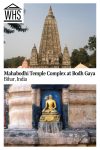Mahabodhi Temple Complex at Bodh Gaya
By Britta
What is the Mahabodhi Temple Complex at Bodh Gaya?
The Mahabodhi Temple Complex at Bodh Gaya marks the location where the Buddha attained enlightenment. The complex contains seven sacred sites including a main temple, the place where the Buddha attained enlightenment (Vajrasana) and the sacred Bodhi Tree where this occurred, multiple stupas and a lotus pond. There is also a meditation garden that has been constructed in recent times.
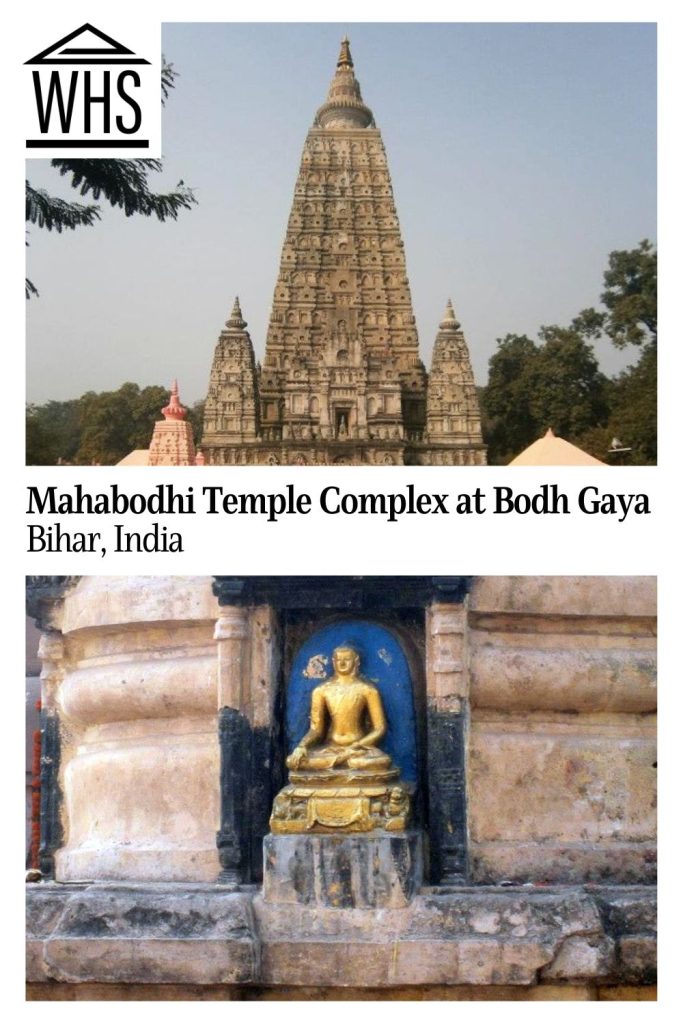
Disclosure: This article contains affiliate links. Making a purchase through an affiliate link will mean a small commission for this website. This will not affect your price. Privacy policy.
Why is the Mahabodhi Temple Complex a UNESCO World Heritage site?
The Mahabodhi Temple Complex is a UNESCO World Heritage site as it is “one of the four holy sites related to the life of the Lord Buddha, and particularly to the attainment of Enlightenment.” It offers “exceptional records for the events associated with the life of Buddha and subsequent worship.”
The Mahabodhi temple dates to the 5th-6th century and is also important in terms of architectural history. UNESCO notes that it is “one of the earliest temple constructions existing in the Indian sub-continent” and was influential in terms of its architecture for many centuries. Few examples of such early and accomplished brick temples remain.
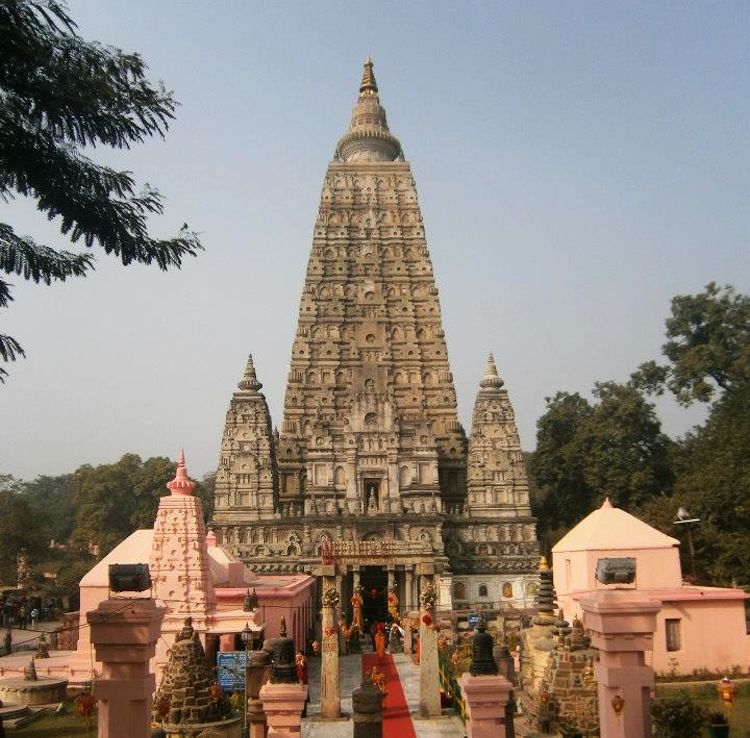
What can you expect on a visit to the Mahabodhi Temple Complex?
You are free to explore most of the complex in your own time, with the exception of the meditation garden that has some set times for meditators only. Please be respectful of others and also try to maintain a peaceful, quiet environment.
There are three pathways that go around the main temple: top, middle and inner. Buddhists circumambulate temples, stupas and other Buddhist items in a clockwise direction, usually a minimum of three times.
Take a walk around the top or middle pathway as this will take you around the main temple as well as the other stupas and Buddhist items in the main temple complex. This route has many prayer wheels on the north side of the temple; you can turn these in a clockwise direction as you pass.
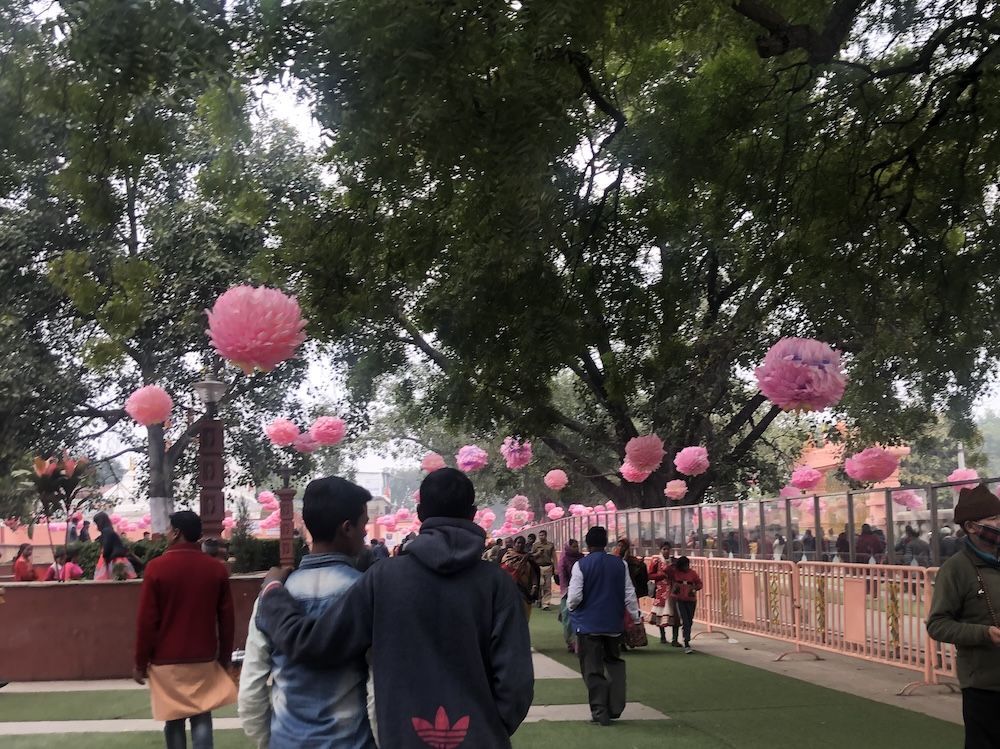
The inner pathway goes around the main temple and the sacred Bodhi Tree. From this path you can see the intricate carvings on the main temple. The main temple also has a golden Buddha statue inside a small room, which you can visit. The line to visit this statue can get long, so go early in the morning if it is a busy period.
Behind the main temple is the sacred Bodhi Tree. You are not permitted to pluck leaves from the tree but if you are lucky and a leaf falls off the tree, then you can take it (They are in high demand and there is a scramble to get these leaves!).
Outside the main temple areas are some open spaces with grass and trees. To the south of the main temple complex is the lotus pond and an area to make light (candle) offerings. To the southeast is the Meditation Park, which has a small entry fee.
The Mahabodhi Temple Complex provides a space where you can take some time out for meditation, prayer or personal reflection. You are welcome to sit anywhere in the grounds for meditation or other practices. In the hotter months, try to find a spot in the shade. You can also sit on the raised step surrounding the inner circle of the main temple or on the floor under the sacred Bodhi Tree. Bring your own meditation cushion if you need one.
Groups may be there, receiving teachings or chanting. You are welcome to stop and watch them.
You will also see many monks, nuns and lay people doing meditation and practices around the complex. These people will have left some of their belongings such as meditation mats in the complex overnight if they are doing a long-term practice or retreat. Out of respect for these people please do not move or touch their things.
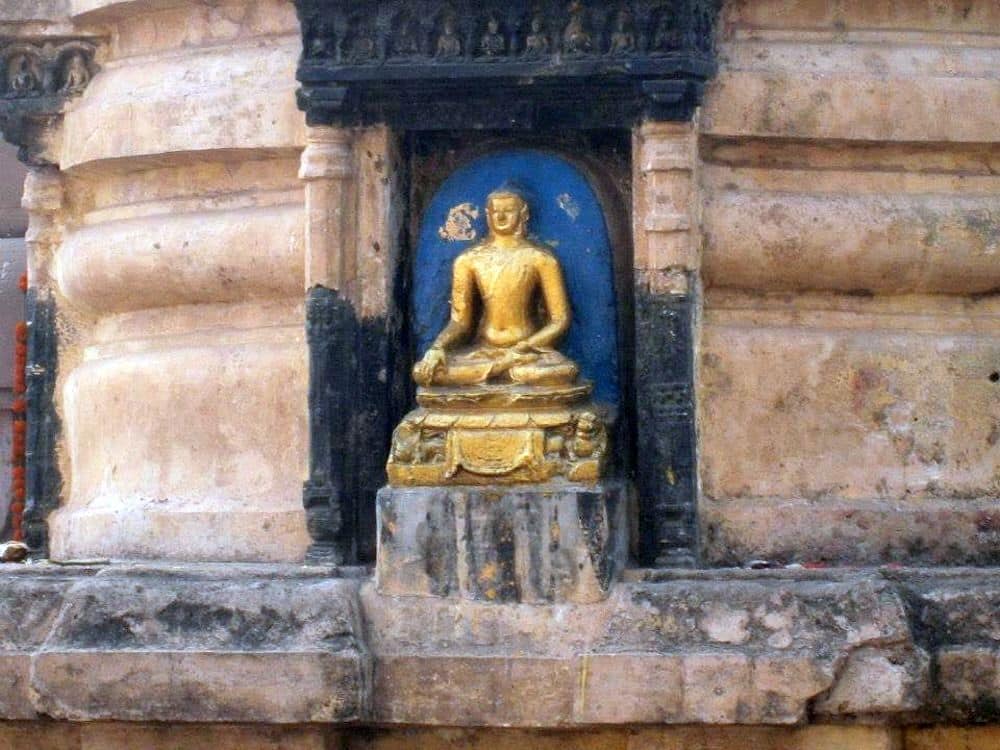
Is the Mahabodhi Temple Complex worth visiting?
For Buddhists, it is an important place to visit for pilgrimage or to attend teachings conducted there.
Other travellers who have some time and are looking for somewhere off the beaten track may also like to visit this site for its historical roots as well as the architecture.
Tips for visiting Mahbodhi Temple Complex
The best time of year to visit the Mahabodhi Temple Complex is from November to February. The rest of the year Bodhgaya is very hot.
The main temple complex is open from 5am to 9pm. Many Buddhists come to walk around the stupa early in the morning and in the evening to walk around the main temple.
You can hire a local guide who will explain more about the history of the complex, Buddhism and the significance of each of the sacred sites.
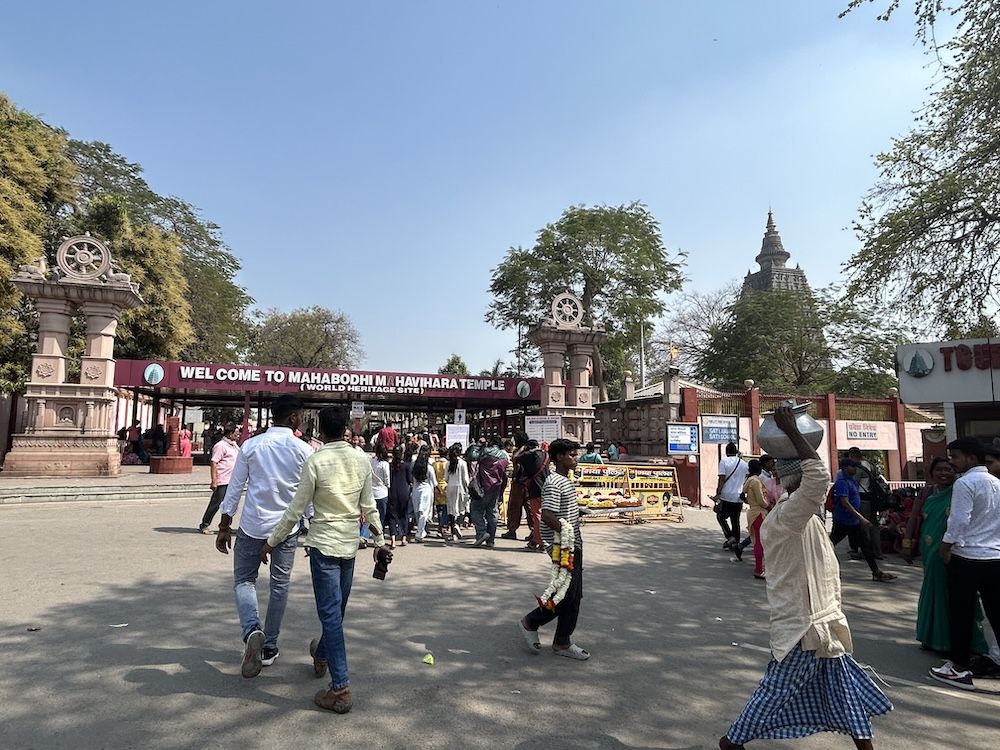
Security screening
You are not permitted to bring certain items into the Mahabodhi Temple Complex, including mobile phones. There are cloak room facilities available at the entrance to the complex. Cameras and video cameras are permitted, but you need to buy a ticket for these.
You will also be required to go through walk-through security screening and your bags will be scanned. There are separate lines for men and women.
Security requirements may change at short notice depending on events or special guests who are attending the Mahabodhi Temple Complex (for example, if His Holiness the Dalai Lama is in attendance).
Clothing and shoes
Dress modestly with shoulders and knees covered, and no revealing clothing.
Shoes can be worn in most parts of the Mahabodhi Temple Complex but must be removed to walk around the inner walkway directly around the temple. Either leave your shoes at the cloak room or place your shoes in a bag and carry them in this area. Bring clean socks to wear if you want.
Other activities in and nearby the Mahabodhi Temple Complex
There are many things you can do in Bodhgaya and other attractions nearby, which you can combine with your visit to the Mahabodhi Temple Complex.
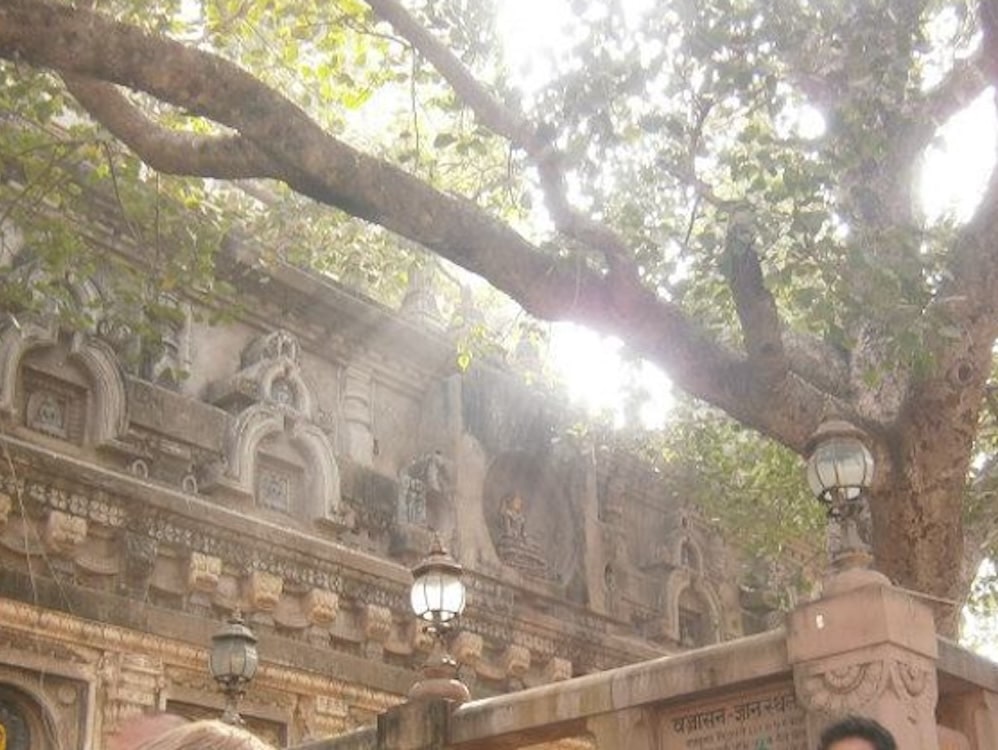
Visit Buddhist temples
There are many Gompas (meditation centers or schools) and temples from various Buddhist schools, traditions and countries located in Bodhgaya close to the Mahabodhi Temple Complex. You are welcome to visit most of these temples.
Buddhist teachings in Bodhgaya
His Holiness the Dalai Lama has delivered teachings in Bodhgaya in the past, usually in the Indian winter. All are welcome to attend these teachings; dates are published on the Dalai Lama’s website. The teachings are usually free (There may be a nominal registration fee.) and are usually simultaneously translated into multiple languages. At these times Bodhgaya is very busy with a huge influx of Tibetan and other people coming to Bodhgaya. Check when these teachings are going on and book transport and accommodation in advance.
There are continuous visitors coming to Bodhgaya for annual Buddhist festivals such as Monlam related to their particular Buddhist tradition or country. These mostly happen in the cooler months from October to March. The Mahabodhi Temple Complex website publishes a schedule of these delegations.
Many of the other temples in Bodhgaya offer Buddhist teachings and retreats (some free and some paid). Root Institute for Wisdom Culture is one place I’d recommend for Buddhist teachings by both Tibetan and Western teachers.
You will find a range of accommodation and restaurants in Bodhgaya for all budgets and tastes. Make sure you visit Mohammad’s Restaurant for a plate of momos (dumplings) or something else from his impressive menu.
Use the map below to find accommodations near the temple. Quite a few are within walking distance.
Visit nearby heritage sites and attractions
There are a number of other Buddhist (and Jain) heritage sites near to the Mahabodhi Temple Complex with the most popular being:
- Archaeological Site of Nalanda Mahavihara at Nalanda is another UNESCO site that comprises the archaeological remains of a monastic and scholastic institution dating from the 3rd century BCE to the 13th century CE.
- Vultures Peak Mountain in Rajgir, which, it is said, was frequented by the Buddha who gave important sermons there. Pilgrims walk to this spot and make offerings.
- Vishwa Shanti Stupa, located next to Vultures Peak, is one of 80 Peace Pagodas worldwide and is accessed by cable car.
The Glass Sky Walk located at the Nature Safari, Rajgir, has become a popular tourist attraction in the area.
If you will be traveling elsewhere in India, it has many more UNESCO sites: 44 to be exact.
Of the four Buddhist holy sites, three are in India. Besides Mahabodhi Temple Complex, there’s Sarnath (on UNESCO’s tentative list) and Kusinagara, both in Uttar Pradesh. The fourth is Lumbini, Buddha’s birthplace in Nepal, also a World Heritage Site.
Where is the Mahabodhi Temple Complex at Bodh Gaya?
The temple is in Bihar state in the town of Bodhgaya, which is just south of the larger town of Gaya. It is about 250 km (155 mi) southeast of Varanesi.
Getting there by air
Limited international flights from Thailand and Myanmar arrive at Gaya airport. Domestic flights are available from other cities in India to the closest airports located near Bodhgaya which are:
- Gaya airport (16 km/10 mi)
- Lok Nayak Jayaprakash Narayan International Airport in Patna (120 km/75 mi).
Look up domestic flights here.
To get from these airports to Bodhgaya, you will need to travel by other transport. Travel time by car is approximately 40 minutes from Gaya and 2.5 hours from Patna. Bus travel times vary. Trains are also available from Patna to Gaya.
Getting there by car
By car, you can reach Bodhgaya on the highways from Gaya (40 minutes), Patna (2.5 hours) and Varanasi (5.5 hours). The highways are well maintained.
Compare rental car prices here.
Getting there by public transportation
By train: Regular trains travel to Gaya station, mostly as part of the Delhi to Kolkata route. Trains on this route have frequent delays in the winter months. Trains are also available from Patna to Gaya (travel times vary). You will need to travel by other transport from Gaya to Bodhgaya.
By bus: Buses are available from both Gaya and Patna to Bodhgaya with prices and travel times varying dependent on the type of bus taken.
Look up and book domestic flights, buses and trains here.
Local transport: If you are staying close to the Mahabodhi Temple Complex in the centre of Bodhgaya you will not need transport as it is within walking distance of most hotels and restaurants. If you are staying a little further away or want to visit some of the other temples located in Bodhgaya, rickshaws/tuk tuks are readily available.
Local taxis are also available if you want to visit some of the local attractions that are located a bit further away from Bodhgaya, such as Rajgir and Nalanda, or to travel to other cities to connect with trains or flights.
If you’re staying in Varanesi, you could see Mahabodhi Temple Complex on a guided day trip, which includes transportation.
Be cautious about travelling at night.
For more information about Mahabodhi Temple Complex at Bodh Gaya, its opening hours and admission fees, see its official website.
Have you been to Mahabodhi Temple Complex? If so, do you have any additional information or advice about this UNESCO World Heritage site? Please add your comments below!

